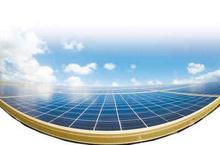 A few days ago, the ETM Solar Energy Industry Association (ESIA) research report released by GTM estimated that by 2015, solar energy demand in the Middle East and North Africa will account for 8% of global total demand, and total solar energy installed capacity is expected to reach 3.5 GW.
A few days ago, the ETM Solar Energy Industry Association (ESIA) research report released by GTM estimated that by 2015, solar energy demand in the Middle East and North Africa will account for 8% of global total demand, and total solar energy installed capacity is expected to reach 3.5 GW. The report predicts that by 2017, the demand for solar energy in the Middle East and North Africa will exceed 10 GW. In 2015, it will be able to meet some of the solar energy demand in the region in advance. Saudi Arabia and Turkey will become the largest solar energy demand countries in the Middle East and North Africa, and demand will account for 70% of the region.
Saudi Arabia has become the first solar market in the Middle East and North Africa region to have a Gigawatt scale. Thanks to its good renewable energy policies and lessons learned from advanced wind power projects, Turkey is expected to become the second largest market in the region.
“Obviously in terms of solar energy, the Middle East and North Africa region will experience profound changes in the next five years,†said researcher Scott Berg, a GTM researcher and author. “When Saudi Arabia becomes the largest market in the region, other regions The country will also have more opportunities. With the deployment of strategic plans, the increase of local partners and the steady development of the supply chain, major companies in the world will clearly see the prospects for solar energy in the Middle East and North Africa, and will seize the opportunity to cooperate."
For oil-producing countries in the Middle East and North Africa region, renewable energy will replace oil to generate electricity, which in turn will help other countries liberate them from high-priced imported oil.
Renewable energy plays an important role in the diversification of energy supply. A few days ago, some countries announced that they would establish a series of renewable energy infrastructure in the Middle East and North Africa and a large amount of investment would follow.
The Saudi Daily News reported on January 14th that a report recently released by the Organizing Committee of the Energy Summit to be held in Doha, Qatar, shows that in the next five years, the Middle East and North Africa will invest 25 million U.S. dollars in energy to meet The current growing energy needs of countries.
In order to increase the energy output of the Gulf countries by 50% during 2013-2017, the Gulf countries will invest approximately US$63 billion in the power industry, 36.8 billion US dollars in the eastern part of the Arab States, 21.4 billion US dollars in Iran, 14.6 billion US dollars in the West of Arabia, and Others. The Arab countries have a total value of 2.3 billion U.S. dollars. At the same time, investment in electricity and energy in the entire Middle East and North Africa region will reach about 147 billion U.S. dollars. Countries in the region will also invest huge sums of money in hydropower projects.
In terms of solar investment, Qatar stated that it will increase solar capacity by 1.8 GW in 2014; Dubai official stated that by 2030, 5% of Dubai’s electricity will come from solar energy; Abu Dhabi will soon complete 100 MW of solar energy concentration. Power station Shams 1; Saudi also announced a renewable energy strategy, which includes the construction of 16 GW of solar energy projects and 25 GW of solar energy centralized power plants in 2030; in addition, the EU continues in the Middle East and North Africa region. Promote desert solar energy plans.
Power Tools---Grinding Machine
Angle Grinder,Dewalt Angle Grinder,Angle Grinder Bosch
Forest Bright Wood Industry Co., Ltd. , http://www.steeldoors-manufacturer.com